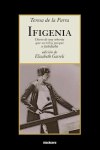It turns out that writing can be addictive. Teresa de la Parra’s heroine, María Eugenia, finishes off her long letter to her friend Cristina de Iturbide, only immediately to then embark on a diary however much she thinks (as she tells us) that this is “a great foolishness, [. . .] a kitsch Romanticism, out of date and very much out of fashion” (83). For someone who values fashion and being fashionable as much as María Eugenia does, it’s quite something that she should take up a practice that’s so clearly unfashionable. She can barely even give a name to what she’s doing: “it will be like what in novels they call a ‘diary’” (83). But the urge to write is stronger than the desire to keep up with the latest trends. It’s as though she can’t help herself: once she’s taken up the pen, she can’t put it down. It’s not fully in her control.
What follows, and what therefore opens the diary, is a reflection on how what we think (our convictions) and what we do (our conduct) can get out of synch. You would have thought that conviction and conduct should go hand in hand: we think something, and then we act on our thoughts. But far from it. María Eugenia thinks to write a diary is kitsch and passé, but she does it anyway: writing has become a custom or “habit” (84), and habits are hard to kick. But there are other ways and other reasons for there to be a slippage between belief and behavior: our actions may be only “acting,” for instance; a performance that doesn’t necessarily reveal our true natures. We act otherwise than we feel for motives both good and bad, and at times it can be hard to tell the difference: we might be trying to deceive or merely trying to fit in; we may be being underhand, or simply polite. Or we may feel ashamed about some secret that we feel the need to hide, so as not to expose ourselves to ridicule or humiliation.
All these situations, and more, are explored in Ifigenia. For instance, María Eugenia confesses (if only to herself, in her diary) that lying has also become a habit, which has taken root in her with surprising “speed and reach” (97). Hence she has few qualms about telling her grandmother that she and her new friend, Mercedes Galindo, will be dining alone when in fact the whole purpose of the dinner is to meet the long-awaited Gabriel Olmedo, who has been set up as a potential suitor. One might ask, moreover, of the habit of dissimulating and the habit of writing are not connected in some way: however much María Eugenia began her letter to Cristina with the assertion that she couldn’t lie when she wrote (3), it has become clear that there’s nothing straightforward about putting something down on paper, not least when almost all the terms and feelings are somehow themselves borrowed from literary sources.
Take for instance the love letter that is embedded within María Eugenia’s diary. This is a missive that she spontaneously decides to compose, while out and about with her young cousin Pedro José (Perucho). She addresses it to Olmedo, whom she has now met and with whom she has, so she believes, almost instantly fallen in love. And she writes it (much to her grandmother and aunt’s later distress) en plein air, with her knees for a desk, and “feverishly [. . . with] the mad sincerity of all those ardent and silent love letters that are never sent” (164). In theory, this should be the most honest of missives, written in the heat of the moment and without regard for audience or schoolroom niceties. But it turns out to be extraordinarily stylized and affected, with extended metaphors that compare her putative beloved alternatively to Jesus (“You are the sweet Messiah of my soul” [165]) and Solomon of the Song of Songs. Or put this another way: if María Eugenia were trying to avoid kitsch Romanticism, here she spectacularly fails. This most sincere and honest of letters is in fact the creation of supremely literary habits of reading. What’s more, it’s clearly also the product of a rather hyper-active imagination and fantasy of what it must be like to fall in love. When it turns out that Gabriel has gone off and gotten engaged to someone else, we can’t but think that (for now, at least) María Eugenia has dodged a bullet.
So we have more than a mere slippage between thought and deed, emotion and expression, and more broadly essence and appearance. We have a thorough upending of all these overlapping distinctions. Performance and fidelity, fakery and authenticity, representation and the real, are all increasingly hard to tell apart, or rather increasingly seem to change places. Mercedes’s boudoir, to take another example, is both an intimate site for the exchange of confidences between women (such as Mercedes’s confession about her unhappy marriage) and also a cushion-filled imitation–or, better, fantasy–of some kind of Oriental antechamber. It’s a place where femininity is sacrosanct, but also where Mercedes and María Eugenia can try out otherwise “masculine” practices such as smoking a cigarette; it’s moreover a transitional space where femininity (and modernity) is itself constructed, through make-up and clothing and the like. In short, Teresa de la Parra is interested both in the psychic spatiality of transnational gender relations, trading off Paris with Caracas, writing and speech, public and private, ornament and utility, and so on, all around the basic division of inside and outside, essence and appearance. But she is equally concerned with the tipping points at which inside becomes outside, essence becomes appearance: the strategic moments when everything, however briefly, is turned inside-out, upside-down.

